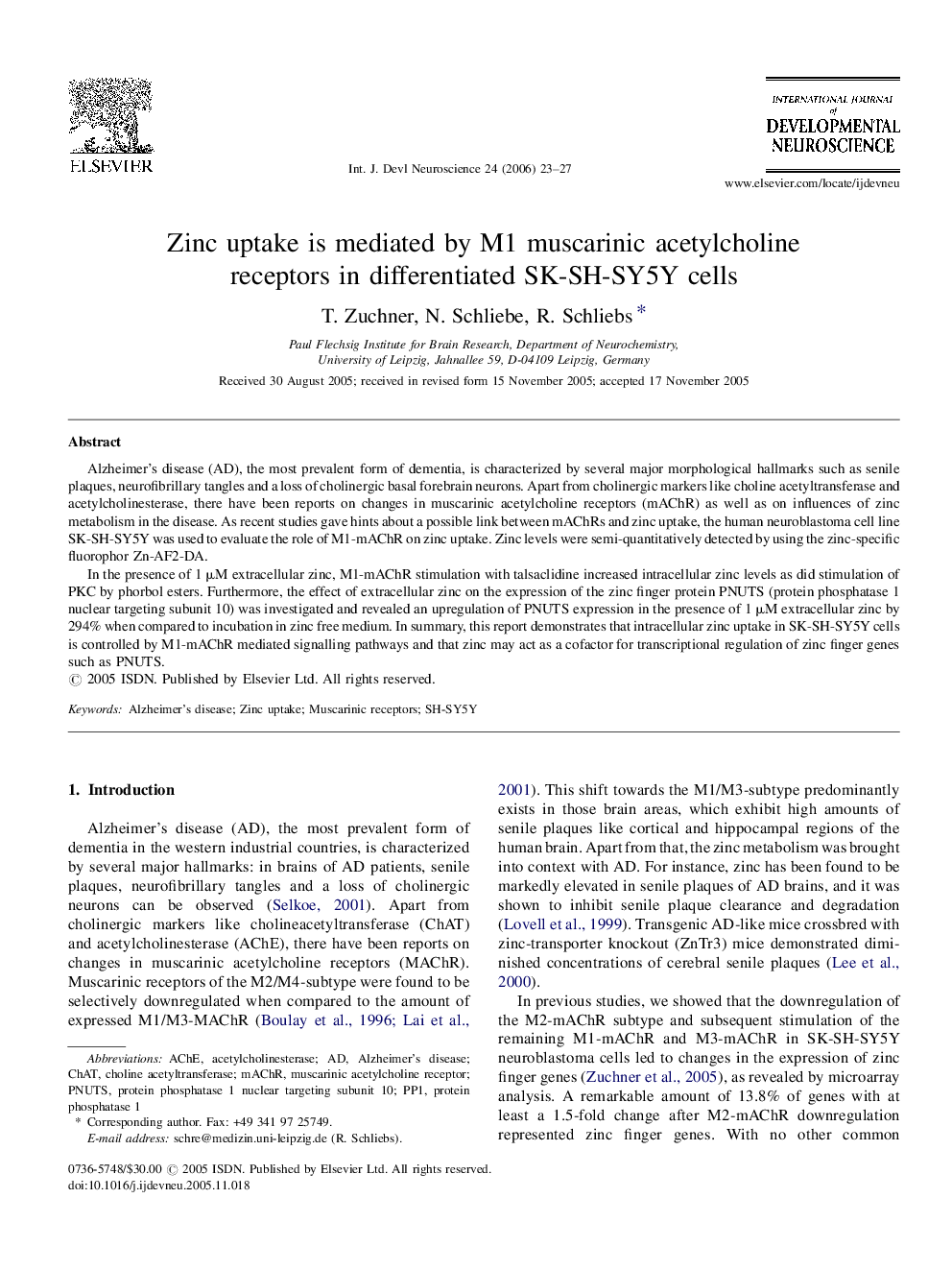| Article ID | Journal | Published Year | Pages | File Type |
|---|---|---|---|---|
| 2787200 | International Journal of Developmental Neuroscience | 2006 | 5 Pages |
Alzheimer's disease (AD), the most prevalent form of dementia, is characterized by several major morphological hallmarks such as senile plaques, neurofibrillary tangles and a loss of cholinergic basal forebrain neurons. Apart from cholinergic markers like choline acetyltransferase and acetylcholinesterase, there have been reports on changes in muscarinic acetylcholine receptors (mAChR) as well as on influences of zinc metabolism in the disease. As recent studies gave hints about a possible link between mAChRs and zinc uptake, the human neuroblastoma cell line SK-SH-SY5Y was used to evaluate the role of M1-mAChR on zinc uptake. Zinc levels were semi-quantitatively detected by using the zinc-specific fluorophor Zn-AF2-DA.In the presence of 1 μM extracellular zinc, M1-mAChR stimulation with talsaclidine increased intracellular zinc levels as did stimulation of PKC by phorbol esters. Furthermore, the effect of extracellular zinc on the expression of the zinc finger protein PNUTS (protein phosphatase 1 nuclear targeting subunit 10) was investigated and revealed an upregulation of PNUTS expression in the presence of 1 μM extracellular zinc by 294% when compared to incubation in zinc free medium. In summary, this report demonstrates that intracellular zinc uptake in SK-SH-SY5Y cells is controlled by M1-mAChR mediated signalling pathways and that zinc may act as a cofactor for transcriptional regulation of zinc finger genes such as PNUTS.
